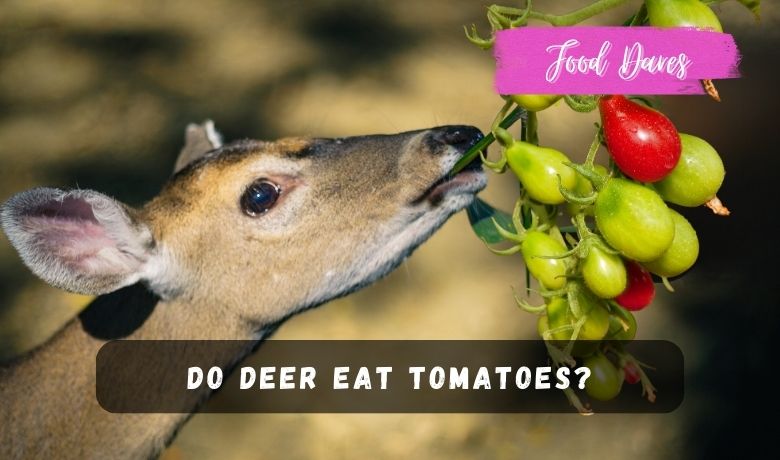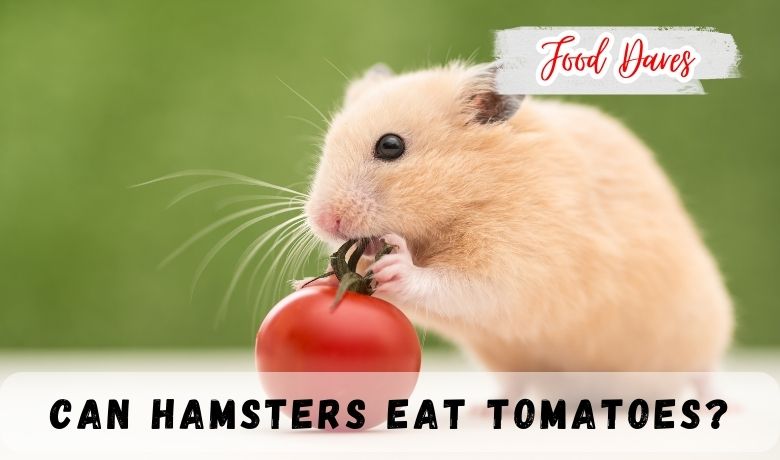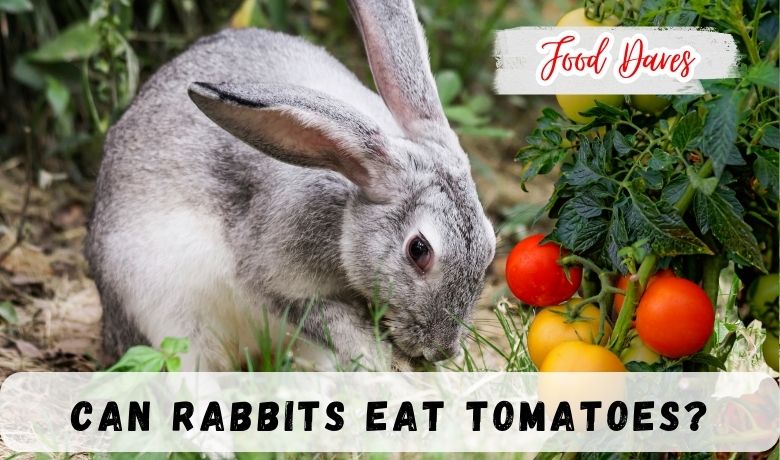Deer are fascinating creatures known for their graceful presence in natural landscapes. They have a diverse diet, primarily consisting of leaves, grasses, and other vegetation. However, when it comes to their feeding habits, deer can sometimes be a nuisance for gardeners and farmers. In particular, tomato plants, with their succulent fruits and vibrant foliage, may catch the attention of these herbivores. This leads us to the intriguing question: Do deer eat tomatoes?
Here today, we will explore the relationship between deer and tomato plants, shedding light on whether deer have a preference for these beloved garden crops. We will delve into the factors that make tomatoes appealing to deer, as well as the potential damage they can cause to tomato plants if left unchecked. However, fear not! We will also provide you with a range of effective strategies to deter deer and protect your precious tomato harvest.
Whether you are an avid gardener, a farmer, or simply intrigued by the interplay between wildlife and agriculture, this article will equip you with valuable knowledge on how to coexist with deer while safeguarding your tomatoes. So, let’s dive into the world of deer feeding habits and find out whether they have a taste for tomatoes!
Deer Feeding Behavior
General overview of deer diet
Deer are herbivores, meaning they primarily feed on plant material. Their diet can vary depending on the season, geographical location, and availability of food sources. In general, deer consume a wide range of vegetation, including leaves, shoots, grasses, shrubs, twigs, and fruits. They are well-adapted to extract nutrients from different plant parts and can browse a variety of plant species.
Factors influencing deer feeding preferences
Several factors influence the feeding preferences of deer. These include:
Nutritional needs: Deers select food sources based on their nutritional requirements. They seek out plants that provide essential nutrients such as proteins, carbohydrates, minerals, and vitamins.
Palatability: Deers have specific preferences for certain plant species or parts of plants based on taste and texture. They may show a preference for plants with tender leaves, succulent fruits, or certain flavors.
Seasonal availability: The abundance of food sources changes with the seasons. Deer adapt their feeding behavior accordingly, targeting available vegetation during each season.
Forage quality: Deers have the ability to assess the quality of forage-based on factors like moisture content, digestibility, and nutrient concentration. They tend to select high-quality forage for optimal nutrition.
Explanation of how deer locate and select food sources:
Deers employ different strategies to locate and select food sources. They rely on their acute senses, including keen eyesight, acute hearing, and a strong sense of smell. Here are some ways deer locate and select their food:
Visual cues: Deer visually scan their surroundings to identify potential food sources. They look for recognizable plants, leafy vegetation, or fruits that catch their attention.
Olfactory cues: Deers have a remarkable sense of smell, allowing them to detect and locate food sources. They can pick up scents of desirable plants or fruits from a considerable distance.
Memory and experience: Deers have the ability to remember the locations of reliable food sources. Through previous experiences and learned behavior, they can return to areas where they have found food in the past.
Trial and error: Deer may sample different plants and observe their effects on their well-being. If a certain plant provides them with adequate nutrition and is palatable, they are likely to return to it.
Understanding deer feeding behavior helps us comprehend their potential interest in tomato plants and provides insights into effective strategies to deter them from feeding on these crops.
Deer and Tomato Plants
Do deer eat tomatoes?
Deer are known to be opportunistic feeders and can consume a wide range of vegetation. When it comes to tomatoes, they can indeed be attracted to these garden crops. However, it’s important to note that the extent of deer’s interest in tomatoes can vary depending on factors such as the availability of other food sources and the presence of alternative plants that are more palatable to them.
Discussion of deer’s attraction to garden crops:
Deer are attracted to garden crops like tomatoes due to several factors. Tomatoes have lush foliage and juicy fruits, making them visually appealing and potentially tasty to deer. Additionally, the aroma emitted by ripe tomatoes can further pique their interest, as deer have a keen sense of smell.
Explanation of factors that make tomatoes appealing to deer:
Factors that make tomatoes appealing to deer include their high water content, sweet flavor, and nutrient-rich composition. Ripe tomatoes can provide a satisfying source of hydration and nutrition for these herbivores.
Damage caused by deer to tomato plants:
When deer feed on tomato plants, they can cause various types of damage, which can impact the growth and yield of the crops.
Description of typical signs of deer feeding on tomatoes:
Signs of deer feeding on tomato plants include partially eaten fruits, stripped leaves or stems, and trampled foliage. Deer may selectively browse specific parts of the plant, such as the fruits or tender shoots, resulting in visible damage.
Discussion of potential consequences for tomato crops:
Deer feeding on tomato plants can have negative consequences for the overall health and productivity of the crops. Continuous browsing can stunt the growth of tomato plants, reduce fruit production, and even lead to plant mortality in severe cases. Additionally, the presence of deer in the garden can disrupt the overall ecosystem balance and pose challenges for gardeners and farmers.
Understanding the dynamics between deer and tomato plants helps us recognize the importance of implementing effective strategies to protect our tomato crops from deer damage. In the next section, we will explore various methods to deter deer and safeguard our cherished tomatoes.
Methods to Deter Deer
Physical barriers
One of the most effective ways to deter deer from accessing tomato plants is by implementing physical barriers. These barriers create a physical obstacle that prevents deer from reaching the crops.
Overview of fencing options to protect tomato plants:
Installing a sturdy fence around the garden or tomato patch can be highly effective in keeping deer at bay. The fence should be at least 8 feet tall and made of materials that deer cannot easily jump over or push through, such as metal or high-tensile wire. Electric fencing can also be used, delivering a mild shock to deter deer from attempting to breach the barrier.
Other physical deterrents such as scare tactics and repellents:
Additional physical deterrents can be employed alongside or instead of fencing. These include scare tactics like motion-activated sprinklers, noise-making devices, and visual deterrents such as reflective tape or scare balloons. Commercial repellents, including odor-based sprays or soaps with strong scents, can also be applied to tomato plants to discourage deer from feeding on them.
Plant selection and companion planting
Choosing deer-resistant plant varieties and strategically implementing companion planting can help protect tomato plants from deer.
Explanation of deer-resistant plant varieties:
Some plant varieties have natural characteristics that make them less appealing to deer. Selecting tomato varieties that are known to be less attractive to deer can reduce the risk of damage. Look for varieties with strong flavors, tough foliage, or higher levels of natural toxins that deer tend to avoid.
Discussion of companion plants that repel deer:
Certain plants have strong scents or tastes that repel deer. Interplanting these companion plants alongside tomatoes can create a barrier of undesirable scents or tastes. Examples of deer-repellent companion plants include marigolds, garlic, onions, and strong-smelling herbs like rosemary or sage.
Other deer management strategies
Apart from physical barriers and plant selection, various other strategies can be employed for effective deer control.
Use of deer repellents and deterrents:
Commercial deer repellents, such as granules or sprays containing substances like predator urine or strong botanical scents, can be applied to tomato plants to make them less appealing to deer. These repellents create an unpleasant taste or odor that deters deer from feeding.
Wildlife management techniques for deer control:
In cases where deer populations are a persistent issue, consulting with local wildlife management authorities or professionals may be beneficial. They can provide guidance on strategies such as deer population control measures or habitat modifications to discourage deer from frequenting the area.
By implementing a combination of physical barriers, plant selection, and other deer management strategies, gardeners and farmers can significantly reduce deer damage to their tomato plants. In the next section, we will explore organic and environmentally-friendly solutions for deterring deer while maintaining a sustainable garden.
Organic and Environmentally-Friendly Solutions
Natural deer repellents and homemade remedies
For those who prefer organic and environmentally-friendly solutions, there are several natural deer repellents and homemade remedies available.
Description of various natural substances that repel deer
Certain scents and tastes are known to deter deer. Some natural substances that can be used as deer repellents include garlic, cayenne pepper, strong-smelling herbs like thyme or lavender, and certain essential oils such as peppermint or eucalyptus.
Recipes for homemade deer repellents
Homemade deer repellents can be easily made using common household ingredients. For example, a mixture of water, dish soap, and crushed garlic can be sprayed on tomato plants to create an unappealing scent for deer. There are numerous DIY recipes available that utilize natural ingredients to repel deer effectively.
Sustainable gardening practices:
Incorporating sustainable gardening practices not only promotes a healthy environment but can also help deter deer from tomato plants.
Discussion of practices that discourage deer and promote biodiversity
Maintaining a diverse garden with a variety of plant species can help reduce the attractiveness of tomato plants to deer. By providing alternative food sources, such as native plants or wildflowers, you can divert deer away from your tomato patch. Additionally, practicing proper garden hygiene, and removing fallen fruits or debris that may attract deer, can discourage their presence.
Benefits of incorporating sustainable gardening methods
Sustainable gardening methods, such as organic fertilization, proper watering techniques, and maintaining healthy soil, contribute to the overall resilience of plants. Strong and healthy tomato plants are less susceptible to deer damage. Furthermore, sustainable gardening practices promote biodiversity and create a balanced ecosystem that is less appealing to deer.
By utilizing natural deer repellents, adopting sustainable gardening practices, and implementing organic remedies, gardeners can protect their tomato plants from deer while minimizing the impact on the environment.
Conclusion
In conclusion, deer have a potential interest in tomato plants due to their visual appeal, taste, and nutritional value. However, there are effective strategies to deter deer from feeding on tomato crops. These strategies include physical barriers like fencing, plant selection of deer-resistant varieties, companion planting, and the use of natural or homemade deer repellents. Additionally, incorporating sustainable gardening practices can help create an environment that is less attractive to deer while promoting biodiversity.
By implementing these methods, gardeners and farmers can strike a balance between protecting their tomato plants and coexisting with deer in a harmonious manner. Remember, while deer can be a challenge, with the right strategies, you can enjoy a bountiful tomato harvest while minimizing deer damage to your garden.



